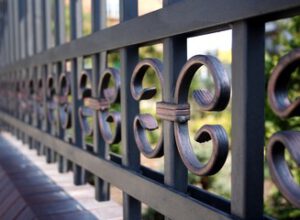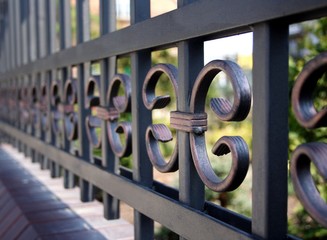A Metal Fence can last for several years, but it may be time to consider a replacement if it becomes rusted or starts to peel paint. Most metal fences are coated with rust-resistant materials, but it’s always good to inspect and repair rusty areas, especially where the fasteners are. This will prevent the rust from eating away at the fence and making it collapse. In addition, it is important to pay attention to the joints that hold the fence together, as corroded joints could weaken the metal fence. Alternatively, if you’ve noticed that rusty areas cover a large area of the metal fence, it may be time for a replacement.
 Corrugated metal panels come in a variety of designs and materials. Some are available with wood slats, corrugated metal panels, or translucent panels. Corrugated panels can mimic the look of a wood fence and can even be designed to look rusted. Fence Companies has designer panels for this type of fence that look like they have been weathered for years. These panels also come with a 40-year warranty.
Corrugated metal panels come in a variety of designs and materials. Some are available with wood slats, corrugated metal panels, or translucent panels. Corrugated panels can mimic the look of a wood fence and can even be designed to look rusted. Fence Companies has designer panels for this type of fence that look like they have been weathered for years. These panels also come with a 40-year warranty.
Choosing a metal fence depends on the level of ornamentation and maintenance requirements. Metal fences with hollow parts are typically made of steel. These parts hide the fasteners and are supported by concrete posts. They are also available with 8-foot panels. For more intricate designs, you may want to consider metal fences that are made from other materials.
Another type of metal fence that mimics the look of wrought iron is made of tubular steel. These panels are made from metal sheets that are bent into shapes. They are then coated with a primer and then painted. The panels come standard with 5/8-inch hollow pickets and hidden fasteners to make them look solid. While most homeowners opt for black tubular steel, you can also opt for any other color you’d like.
Another type of metal fence is chain link. Although it’s not as decorative as other types, chain link fencing is inexpensive and can be used for temporary fencing. Although it may not have the same aesthetic appeal as other types, it’s adequate for containing pets and children. Moreover, many homeowners prefer it because of its flexibility, which makes it possible to install it around unique property lines. So, before you start purchasing Metal Fences, you should understand their benefits and drawbacks.
While steel fencing is very durable and is an excellent choice for high-security fencing, aluminum panels are also available. However, aluminum fence panels weigh 11 pounds apiece, so you’ll need to make more than one trip to carry them home. Hollow-steel panels, on the other hand, can weigh up to 50 pounds, which means they require fewer posts to secure them.
Whether you need to add security or create a beautiful design for your yard, there’s a Metal Fence for you. These fences are available in many different sizes and styles. You can choose from 3′ or 6′ panels, and the height of the panels depends on your needs. If you have a large area, you can even link multiple sections together to create a longer fence run.
When installing a Metal Fence, it is crucial to install the posts properly. Ideally, the posts should have metal plates welded to the bottom and are secured with masonry screws. Another option is a retrofit mount, which uses the same screws, but hides the screws with trim. Metal fence rails should be 11 inches tall and be attached to a brick wall or masonry column using a fixed bracket. You can also use an adjustable mount, but you need to use a metal plate as a reinforcement for your fence.
Metal fences made of aluminum and steel are extremely popular today. They are lightweight and cheaper than steel and can be decorated with ornamental designs. Additionally, they are virtually maintenance-free. However, they’re not as sturdy as steel and are not suitable for security gates or commercial fencing. Metal fences made of aluminum are 100% recyclable, making them a good option for coastal properties. So, if you’re looking for a Metal Fence, make sure to choose the best material for your project.
